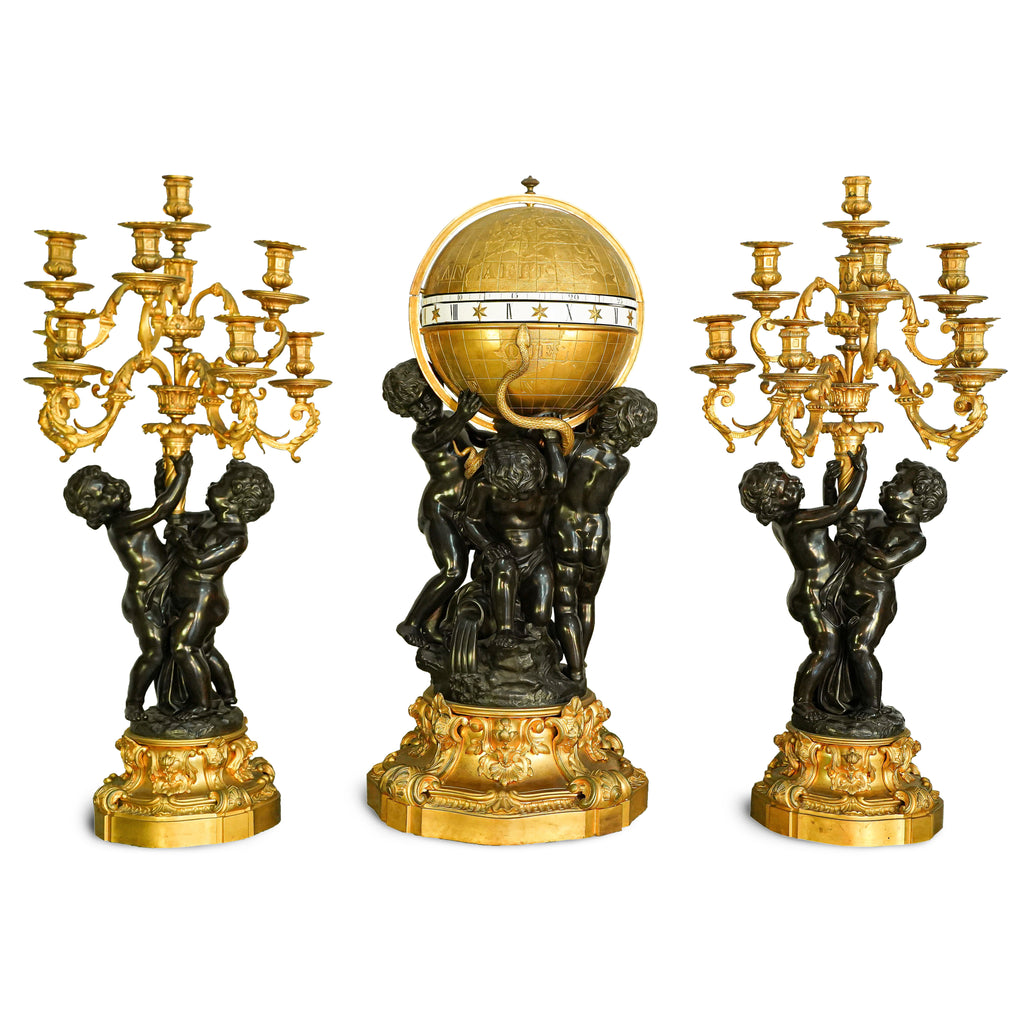AN EXCEPTIONAL GILT & PATINATED BRONZE 'CERCLES TOURNANTS' CLOCK GARNITURE BY DENIERE, PARIS
$165,000.00
An exceptional and rare clock set from the Napoleon III period, this stunning three-piece ensemble, known as the "Pendule A Cercles Tournants," stands as a testament to artistic grandeur. Comprising a palatial clock and an exquisite pair of 8-light candelabras, this set is a pinnacle of opulence and craftsmanship.
The focal point, the clock movement enclosed within an exquisitely crafted terrestrial globe adorned with enameled rings and a snakes-head pointer, captures attention. Expertly chased, the globe is cradled by three putti, one kneeling near an overturned vase symbolizing the continents and oceans. This impressive composition rests on a rockwork base supported by a spreading pedestal adorned with intricately detailed corbels, lush foliage, and guilloche carvings.
Notably, this exceptional clock is inspired by an 18th-century model, a similar example of which resides in the esteemed collection of the Victoria and Albert Museum, London, as documented in Tardy's "French Clocks the World Over" (Paris, 1981, p. 101).
Signed by the distinguished Deniere A Paris, this magnificent ensemble, crafted around 1870 in Paris, epitomizes the epitome of artistic prowess, showcasing an extraordinary blend of historical inspiration, intricate detailing, and unparalleled elegance.
Signed on the movement Deniere A Paris.
Paris, Circa 1870
Dimensions
Clock:
Height: 31" (78.7 cm)
Width: 15" (38.1 cm)
Depth 15" (38.1 cm)
Candelabras:
Height: 34" (86.3 cm)
Width: 16" (40.6 cm)
Depth: 13" (33 cm)




















